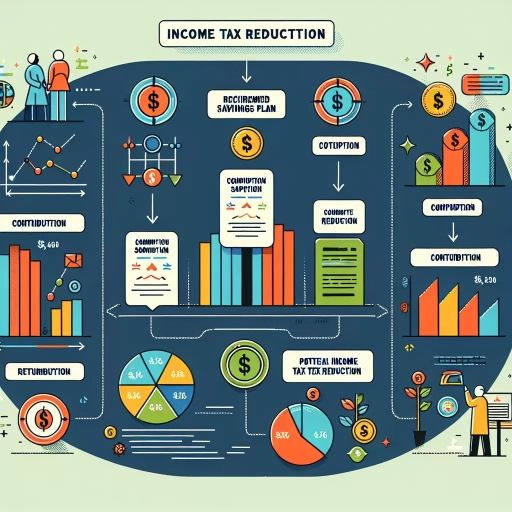How Much Should I Contribute To My Rrsp To Reduce Income Tax

Understanding RRSP Contributions and Income Tax Reduction
The Concept of RRSP
The Registered Retirement Savings Plan (RRSP) is a retirement savings and investment vehicle for employees and the self-employed in Canada. It's established under the federal laws and allows for tax benefits. Under the RRSP, you can contribute a particular portion of your income to this plan, which will be subjected to tax deductions when you are in a lower tax bracket, usually during retirement. It's important to understand that money invested in RRSP is tax-deferred and not tax-free.
Benefits of RRSP Contributions
The primary purpose of contributing to an RRSP is to lower the tax bill. When you make a contribution, it reduces the total amount of income that you have to report on your tax return. This reduction in taxable income could potentially drop you into a lower tax bracket, resulting in significant tax savings. In addition to reducing your income tax, RRSP contributions also provide future financial security. Your RRSP savings can be a significant source of income during your retirement years, helping you maintain your standard of living even when regular income drops off.
The Relationship Between RRSP Contributions and Income Tax
Contributions to RRSP directly impact your income tax owing because those contributions are tax-deductible. The Canadian government allows you to claim your RRSP contributions as a deduction on your tax returns, thus reducing your taxable income, and by extension, your income tax. Additionally, the investment income you earn in your RRSP is tax-free, as long as that income remains in the plan. It's only when you make withdrawals from your RRSP that you have to pay tax. When you eventually withdraw money from your RRSP in retirement, your income may be lower than it was when you were working, which could lead to paying less tax overall.
How Much Should You Contribute to RRSP to Reduce Income Tax?
Determining Your Contribution Room
To maximize the tax benefits of your RRSP, it’s crucial to first understand your contribution room — this is the maximum amount you can contribute to your RRSP in a given tax year without incurring penalties. It's typically equal to 18% of your earned income from the previous tax year up to an annual maximum amount set by the government. However, you need to consider contributions to a pension plan, which will reduce your RRSP deduction limit. Understanding your contribution limit will help you determine how much you should contribute to your RRSP to effectively reduce income tax.
Maximizing RRSP Contributions
The most effective way to minimize income tax through RRSP is to make the maximum contribution. Fuller contributions not only lower your taxable income for the current tax year but also build your retirement savings faster, giving you a more significant nest egg to rely on. Moreover, maximizing RRSP contributions can potentially drop you to a lower tax bracket, resulting in less tax paid and more money saved.
Strategic RRSP Contributions
While it is generally beneficial to contribute as much as you can to your RRSP, it's essential to strategize your contributions based on your current income and projected post-retirement income. If you expect your income to peak in the coming years, you might want to carry forward part of your contribution room. Then, you can make larger contributions in the years when your income is higher to reap more tax savings. If you suspect your retirement income will be higher than your current earnings, it might be beneficial to withdraw part of the RRSP early or invest in a Tax-Free Savings Account (TFSA) instead.
Expert Tips to Leverage RRSP for Income Tax Reduction
Take Advantage of a Spousal RRSP
A Spousal RRSP is an effective tax-saving device when there is a significant income discrepancy between you and your spouse. The higher-earning spouse makes contributions to the Spousal RRSP, reducing the tax bracket for the higher earner while increasing the retirement savings in the name of the lower-income spouse. And when retirement comes, income can be more equitably divided, potentially reducing overall income tax.
Use Carry-Forward Contribution Room
If you cannot take full advantage of your RRSP contribution in a given year, the Canada Revenue Agency (CRA) allows you to carry forward your unused contribution room indefinitely. Using this strategy will enable you to make greater contributions in future years when you might be in a higher tax bracket, thus allowing for more significant tax savings.
Consider an RRSP Loan
If you have significant unused RRSP contribution room, you may want to consider taking an RRSP loan to catch up. The tax refund generated by your RRSP contribution could partially or wholly offset the cost of your loan. However, you need to be certain that you can repay the borrowed money. Considering an RRSP loan is a step that should happen under the consultation of a financial advisor to ensure it is a beneficial move to your unique financial situation.